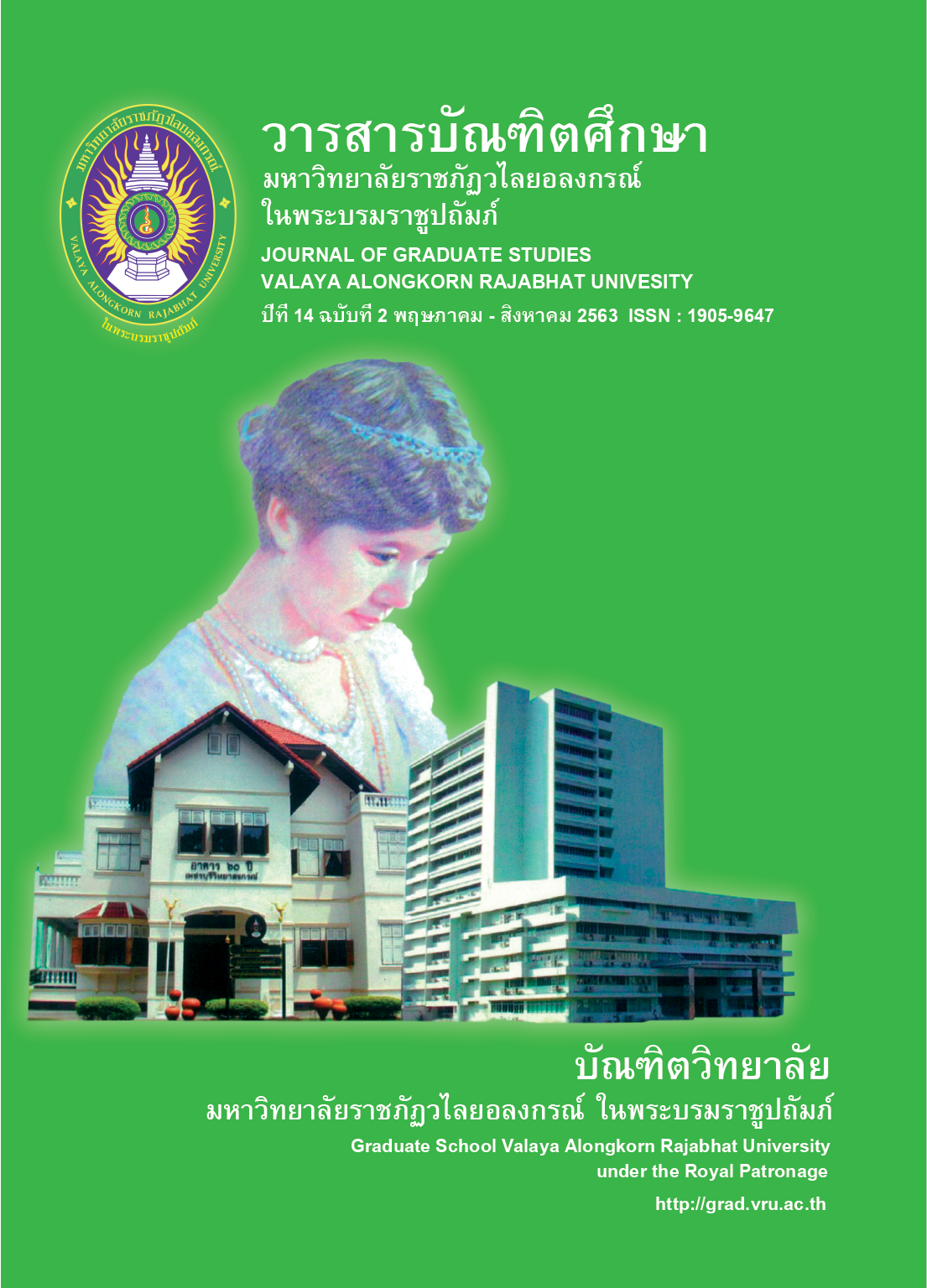THE DEVELOPMENT A SOCIAL MEDIA LEARNING MODEL FOR EDUCATION TECHNOLOGY AND COMPUTER EDUCATION STUDENTS IN FACULTY OF EDUCATION MAHASARAKHAM UNIVERSITY
Main Article Content
Abstract
The purposes of the research were: 1) to develop a social media learning model for Education Technology and Computer Education Students in Faculty of Education Mahasarakham University, and 2) to study a satisfaction of social media learning model for Education Technology and Computer Education students in Faculty of Education Mahasarakham University. The procedure was divided into 3 phases; phase 1: to synthesize elements of a Social Media Learning model, phase 2: to develop a social media learning model, and phase 3: to use the model and present the results. The sample of this research was Undergraduate Students Faculty of Education Mahasarakham University enrolled web-based Instruction course 23 sample with purposively selected. The statistics used were mean, standard deviation.
The research results were as follows.
- The elements of the social media learning model for Education Technology and Computer Education Students in Faculty of Education Mahasarakham University model had 4 elements as follow: (1) objectives , (2) analyze context instruction in the process had 4 step as follow: 2.1) analyze teacher, 2.2) analyze learner, 2.3) analyze content, 2.4) analyze instructional media, (3) instruction strategies in the process had 7 step as follow: 3.1) social media selection, 3.2) social interaction, 3.3) content creation, 3.4) motivation, 3.5) presentation and progress, 3.6) knowledge sharing, and 3.7) reflection, (4) evaluation and the specialists validate the social media learning model for Education Technology and Computer Education Students in Faculty of Education Mahasarakham University at “highly appropriate”.
- Results of students satisfaction to social media learning model found that in the research students satisfied in high level (
= 4.08 , S.D.= 0.29).
Article Details
บทความทุกเรื่องได้รับการตรวจความถูกต้องทางวิชาการโดยผู้ทรงคุณวุฒิ ทรรศนะและข้อคิดเห็นในบทความวารสารบัณฑิตศึกษา มหาวิทยาลัยราชภัฏวไลยอลงกรณ์ ในพระบรมราชูปถัมภ์ มิใช่เป็นทรรศนะและความคิดของผู้จัดทำจึงมิใช่ความรับผิดชอบของบัณฑิตวิทยาลัย มหาวิทยาลัยราชภัฏวไลยอลงกรณ์ ในพระบรมราชูปถัมภ์ กองบรรณาธิการไม่สงวนสิทธิ์การคัดลอก แต่ให้อ้างอิงแหล่งที่มา
References
Bangthamai, E. (2017). kānphatthanā rūpbǣp kitčhakam kān rīan kānsō̜n bon khrư̄a khāi sangkhom ʻō̜nlai phư̄a songsœ̄m kānchai ʻinthœ̄net chœ̄ng sāngsan samrap phū rīan nai radap ʻudomsưksā [The Development of
Learning and Teaching Activities through Online Social Networking to Promote Creative Internet Using for Students in Tertiary Level]. Silpakorn University Journal. 37(1), 93-118.
Banlue, S. (2017). rūpbǣp kānčhatkān rīan kānsō̜n ʻō̜nlai thī mo̜som samrap mahāwitthayālai rātchaphat ʻUbon rātchathānī [The Suitable Model of Online Learning and Teaching for Ubon Ratchathani Rajabhat University]. Journal of Roi Et Rajabhat University. 11(2), 250-260.
Cronbach, L. J. (1990). Essentials of Psychological Testing. 5th ed. New York: Harper Collins.
Driscoll, M. (2002). Blended learning: Let’s get beyond the hype. E-Learning, 1(4), 1–3. Retrieved from https://www- 07.ibm.com/services/pdf/blended_learning.pdf.
Ethier, J. (2006). Current Research in Social Network Theory. Retrieved from https://www.scribd.com/doc/11171859/Current-Research-in-Social-Network-Theory.
Marquez, R. (2011). Analysis of social networking: good idea or not?. U.S.A: Kennesaw State University.
Osatuyi, B. (2013). Information sharing on social media sites. Computers in Human Behavior, 29(6), 2622-2631. Retrieved from https://www.researchgate.net/publication/253238930_Information_sharing_on_social_media_sites.
Prangsorn, S. (2014). kānphatthanā rūpbǣp kān rīanrū dūai sư̄ ʻilekthrō̜nik khō̜ng yaowachon rư̄ang phūmpanyā thō̜ngthin dōi kānmī sūanrūam khō̜ng chumchon kō̜ranī sưksā čhangwat Nakhō̜n Pathom [The Development of Model Learning with e-learning media of Among Youth in Province]. Rajamangala University of Technology Rattanakosin.
Saekwung, A. (2016). kānčhatkān rīanrū dūai sư̄ mai [Learning Management with New Medias]. Journal of Humanities and Social Sciences, SRU. 8(1), 251-274.
Sangpom, N. & Wannapiroon, P. (2012). kānphatthanā rūpbǣp kānčhatkān rīan kānsō̜n bǣp ʻing prasopkān phān sư̄ sangkhom phư̄a phatthanā māttrathān khunnawuthi wichāchīp ʻudomsưksā dōi chai krabūankān rīanrū bǣp MIAP [Development of instructional model in social media experience base approach for develops reference standards for vocational qualifications of higher education using learning process MIAP]. Academic Services Journal, 23(3), 54-67.
Srisa-ard, B. (2000). kānwičhai bư̄angton [Basic research]. 6th ed. Bangkok: Suweeriyasan.
Wijitboonyaruk, P. (2011). sư̄ sangkhom ʻō̜nlai : sư̄ hǣng ʻanākhot [Social media : The media of the future]. Journal of Management, 31(4), 99-103.
Yakin, I. & Tinmaz, H. (2015). Theoretical Guidelines for the Utilization of Instructional Social Networking Websites. Turkish Online Journal of Distance Education. 16(4), 67-83. Retrieved from https://tojde.anadolu.edu.tr/yonetim/ icerik/makaleler/1218-published.pdf.


